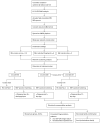Molecular Networking in Cosmetic Analysis: A Review of Non-Targeted Profiling for Safety Hazards and Bioactive Compounds
- PMID: 41097388
- PMCID: PMC12526295
- DOI: 10.3390/molecules30193968
Molecular Networking in Cosmetic Analysis: A Review of Non-Targeted Profiling for Safety Hazards and Bioactive Compounds
Abstract
Molecular networking (MN) is a novel mass spectrometry data analysis method that has advanced significantly in recent years and has rapidly emerged as a popular technique. By visualizing the connections between structurally similar compounds in mass spectra, MN greatly enhances the efficiency with which harmful substances and bioactive ingredients in cosmetics are screened. In this review, we summarize the principles and main categories of MN technology and systematically synthesize its progress in cosmetic testing applications based on 83 recent studies (2020 to 2025). These applications include screening banned additives, analyzing complex matrix components, and identifying efficacy-related ingredients. We highlight MN's successful application in detecting prohibited substances, such as synthetic dyes and adulterants, with limits of detection (LOD) as low as 0.1-1 ng/g, even in complex matrices, such as emulsions and colored products. MN-guided isolation has enabled the structural elucidation of over 40 known and novel compounds in the analysis of natural ingredients. We also discuss current challenges, such as limitations in instrument sensitivity, matrix effects, and the lack of cosmetic-specific component databases. Additionally, we outline future prospects for expanding MN's application scope in cosmetic testing and developing it toward computer-aided intelligence. This review aims to provide valuable references for promoting innovation in cosmetic testing methods and strengthening quality control in the industry.
Keywords: cosmetic quality and safety; illegally added substances; molecular networking; natural active ingredients; non-targeted analysis; tandem mass spectrometry.
Conflict of interest statement
The authors declare no conflicts of interest.
Figures


References
-
- Ferrier M., Gémin M.-P., Malinowska M.A., Abdallah C., Magot F., Birer-Williams C., Giglioli-Guivarc’h N., Hano C., Lanoue A. Phytochemistry Reviews. Springer Nature; Berlin/Heidelberg, Germany: 2024. Metabolomics applications in natural cosmetics: Addressing the new challenges of bio-sourced ingredients. - DOI
-
- Mondello A., Salomone R., Mondello G. Exploring circular economy in the cosmetic industry: Insights from a literature review. Environ. Impact Assess. Rev. 2024;105:107443. doi: 10.1016/j.eiar.2024.107443. - DOI
Publication types
MeSH terms
Substances
LinkOut - more resources
Full Text Sources
Medical

